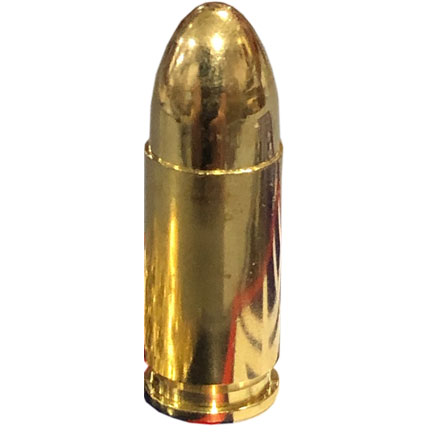
Copper Jackets
When ammunition companies introduced copper jacketed bullets at the end of the 19th century, they were quickly embraced. Copper, being a harder metal than lead, could be driven to higher velocities, while eliminating quite a bit of the fouling properties that are associated with lead bullets. The copper jacketing also aids to control bullet expansion upon impact, allowing copper jacketed bullets to penetrate deeper into a target than lead bullets.
The Hague Convention of 1899 prohibited the use of expanding bullets in warfare, and by the time that inventor John Moses Browning developed the M1911 handgun in .45 ACP, a round-nosed bullet with a jacket that completely covered the nose was the design of the day. This full metal jacket, or FMJ design, is still in good use today and is popular with law enforcement, military and target shooters alike. The base of these bullets is usually the only area of exposed lead. They feed well in the autoloading pistols and are very accurate.
FMJs are also available in flat-point configurations, especially for revolvers. My Smith & Wesson Model 36, in .38 Special, with its tiny 1 7/8-inch barrel, likes the 158-grain FMJ flat points. Rainier Ballistics offers projectiles that are fully encapsulated in copper jackets, so as to have little or no lead fumes upon firing. These are often required in the indoor pistol ranges, where the risk of lead poisoning needs to be kept to a minimum. They are available in most popular handgun calibers and weights. Mr. Hickok would be amused that we have devised a means to shoot our pistols indoors.
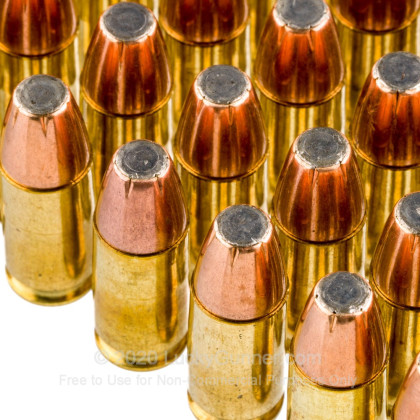
Jacketed Soft Point
Using the copper jacket, but leaving an exposed area of lead at the nose, the Jacketed Soft Point (JSP) bullets are designed to give the good expansion of lead bullets, while fouling much less than their lead counterparts. They are among the suitable hunting bullets for handgunners. The JSP is usually constructed as a flat-point bullet, and some pistols don’t seem to like to feed them very well. Revolvers, on the other hand, have no problem at all with this type of bullet. The large frontal area of the flat meplat transmits energy well and has been a consistent design that’s been here for decades and probably isn’t going anywhere soon.

Hollow-Points
Hollow-point bullets saw the light of day in the late 19th century also, and our dear Mr. Hickok would have most certainly cocked an eyebrow at the performance of these bullets. Their original purpose was as rifle bullets with lighter bullet weights (via hollow-nose cavities), and they proved the only way ammunition designers could increase velocities using black powder. The copper-jacketed variety followed soon, and it wasn’t long before folks noticed that, in a pistol, the expansion of the hollow-point jacketed bullet was wonderful.
Although prohibited for use in war, the hollow-point (or HP) is a common sight among law enforcement officers and civilians who are armed for self-defense. At pistol velocities, which generally speaking are below 1,100 feet per second, the HP design will reliably expand. This is an important feature when the risk of over-penetration is present; an innocent bystander could be injured or killed if a bullet were to exit from or ricochet off the intended target.
There are some excellent jacketed hollow-points available, such as the Hornady XTP, Speer GoldDot or Federal HydroShok. If you’re a reloader, you can play with the different component bullets available in HP configuration to find the one that your pistol will feed best, or the one that your revolver shoots most accurately. Invariably, this style of bullet is what you want in the gun if ever you find your life is on the line. Most of the smaller caliber handgun rounds perform best when loaded with jacketed hollow-point ammunition, and the larger cartridges can produce some devastating results using a good, jacketed hollow-point.
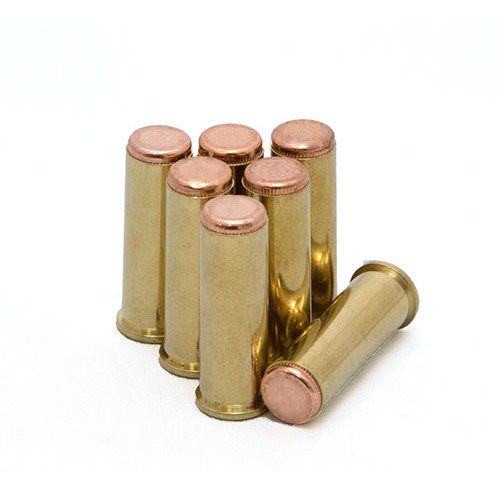
Wad Cutters
The wad cutter is a horse of a different color. It is designed to punch neat little caliber-sized holes in paper targets, and at pistol velocities it works very well. These bullets look like lead cylinders, with no taper at the noses or bases. They are designed for close range use, and the neat holes they punch help to score the competitive gun games. Some of these strange looking projectiles have a hollow cavity at the base, and they are built this way so the burning gases from the powder charge will push on the inner walls of the hollow base, and help to grab the rifling in the barrel for the best accuracy.
However, these hollow base wad cutters must be loaded to low velocities (less than 750 fps or so) or they can be torn apart upon firing. Wad-cutter bullets are often loaded so the front of the bullet is flush with the end of the case mouth. This prevents their use in auto-loading pistols, but boy, do they shine in revolvers. My .38 likes the 148-grain, hollow-base wad cut ter and Hodgdon’s TiteGroup powder. Even that tiny barrel can be accurate.
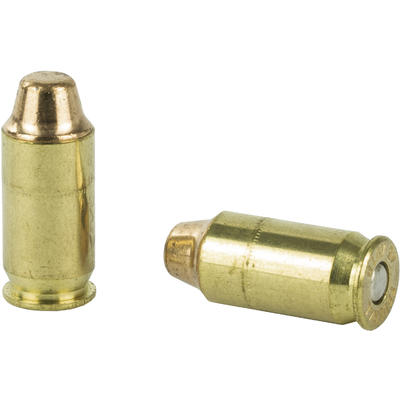
Semi-Wad Cutter
The semi-wad cutter (SWC) is a hybrid bullet, retaining the caliber-sized rear shank of the wad cutter, but putting a smaller diameter, curved and tapering nose section with a flat nose profile. This helps to stabilize the bullet at longer distances, while still giving the clean target hole for ease of scoring. The bullet was just about perfected by a gentleman named Elmer Keith (you might have heard of him), and the semi-wad cutters were instrumental is his development of magnum pistol cartridges. They make a good hunting round, when cast as a hard alloy, and are often loaded for .41 and .44 Magnum revolvers.
These bullets also have their place in the gun games. My pal Marty Groppi has a tricked-out 1911 in .45 ACP that absolutely loves the 185-grain SWC. I’ve never shot a 1911 that feeds as smooth or comes back on target as quickly and easily as Marty’s. Bill Hickok is nodding in agreement.
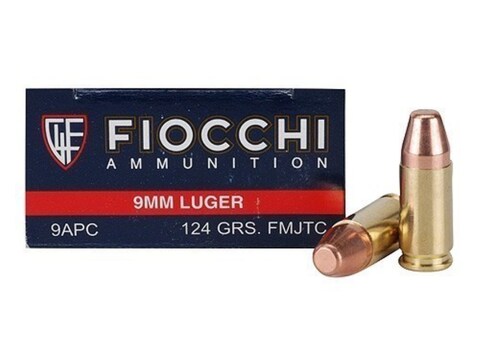
Truncated Cone
The last bullet shape I’d like to discuss here is the truncated cone, or TC. The rear portion of the TC bullet has parallel sides, yet the nose is comprised of a “frustum,” which is a part of a cone that is cut off by two parallel lines so that the TC bullet has a flat nose profile but a straight-line taper from the caliber-sized shank to the nose. I’ve loaded some 180-grain TC from Falcon Bullet Company in a .40 S&W with great results. There are many companies that offer them in both cast lead and FMJ construction.
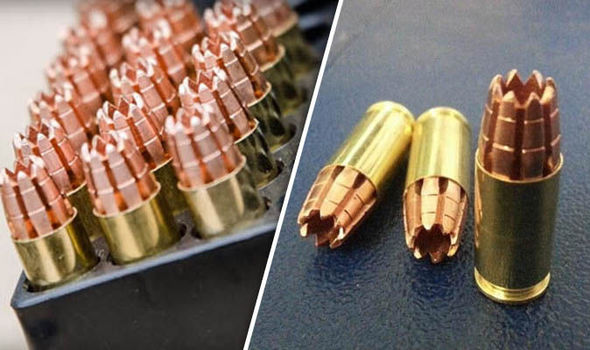
More Radical Designs
Modern metallurgy has provided the capability to produce some radical bullet designs when compared to the bullets of the early 20th century. All copper hollow points, scored or perforated so as to offer extreme expansion, are being made by companies like Cutting Edge Bullets.
These are designed to inflict a huge wound channel upon initial contact, while the rear portion drives through to fully penetrate the target. They would make a wonderful self-defense load. These all-copper bullets tend to be lighter than their lead or lead-core counterparts, yet being a harder metal they can hold together where needed, yet expand reliably.
Rifle bullet designs have been modified into pistol configurations also. The Swift A-Frame, with its lead core chemically bonded to a thick copper jacket, is available to those wanting to hunt larger game with their handgun. They are heavy for caliber, and the deep hollow point will help to initiate expansion at handgun velocities. Barnes put the pistol spin on their very popular all-copper X-bullet design, marketed as the XPB (X pistol bullet) which should have the same quality hunting results as their rifle bullets. Hornady’s FlexTip spitzer bullet, complete with pliable rubbery tip, is also available in handgun calibers. Bullets like these make the handguns we have come to love carrying in the hunting fields even more versatile and potent, and that’s a good thing.
